A comprehensive guide to sales prospecting: everything you need to know
The only way your sales reps can meet their quotas and close deals is if they have enough prospects in their pipeline. These are buyers who are a good fit for your products or services.
So how can you prospect more effectively? How can you ensure that you’re targeting and focusing on the right prospects?
With a proven sales prospecting process.
In this article, we’ll explain what sales prospecting is and why it’s important. We’ll also cover each stage of the sales prospecting process and provide our best prospecting tips that you can steal to elevate your sales strategy.
What is sales prospecting?
Sales prospecting is the process of identifying and engaging with prospects who are a good fit for your products or services. The goal is to move prospects through your sales pipeline and generate new business.
What are the different sales prospecting methods?
Reps use many different prospecting methods to fill their pipelines. The most common is outbound prospecting, which is also known as “cold outreach” because you’re reaching out to people who have no prior relationship with your company.
Examples of outbound sales prospecting include:
- Cold calls: While it’s an age-old sales technique, cold calling still works in today’s modern sales environments. Of course, you need to take the right approach when you make these types of calls (more on that later).
- Emails: Cold emailing entails sending an unsolicited email to someone you haven’t previously had contact with. Again, this prospecting method still works, but you’ll need to research your prospects before you hit the send button.
- Social media: In B2B environments, this typically entails using social media channels like LinkedIn. Here, you’ll identify a prospect, craft a personalized communication, and send a direct message.
Prospecting isn’t just limited to digital channels, though.
Reps can also use traditional channels, like industry events and conferences, to prospect. This is an effective way to fill a pipeline. In fact, 68% of top-performing sales reps use a combination of traditional and digital channels in the sales process.
Why is sales prospecting important?
Prospecting is the first step in the sales process and arguably the most important. Get it right, and you’ll keep your pipeline full. But get it wrong, and you’ll have a hard time hitting your quotas.
Here’s why sales prospecting is so important and why it needs to be more of a priority if it isn’t already.
Fills your pipeline with quality prospects
Let’s start with the obvious:
A solid sales prospecting process keeps your sales pipeline full.
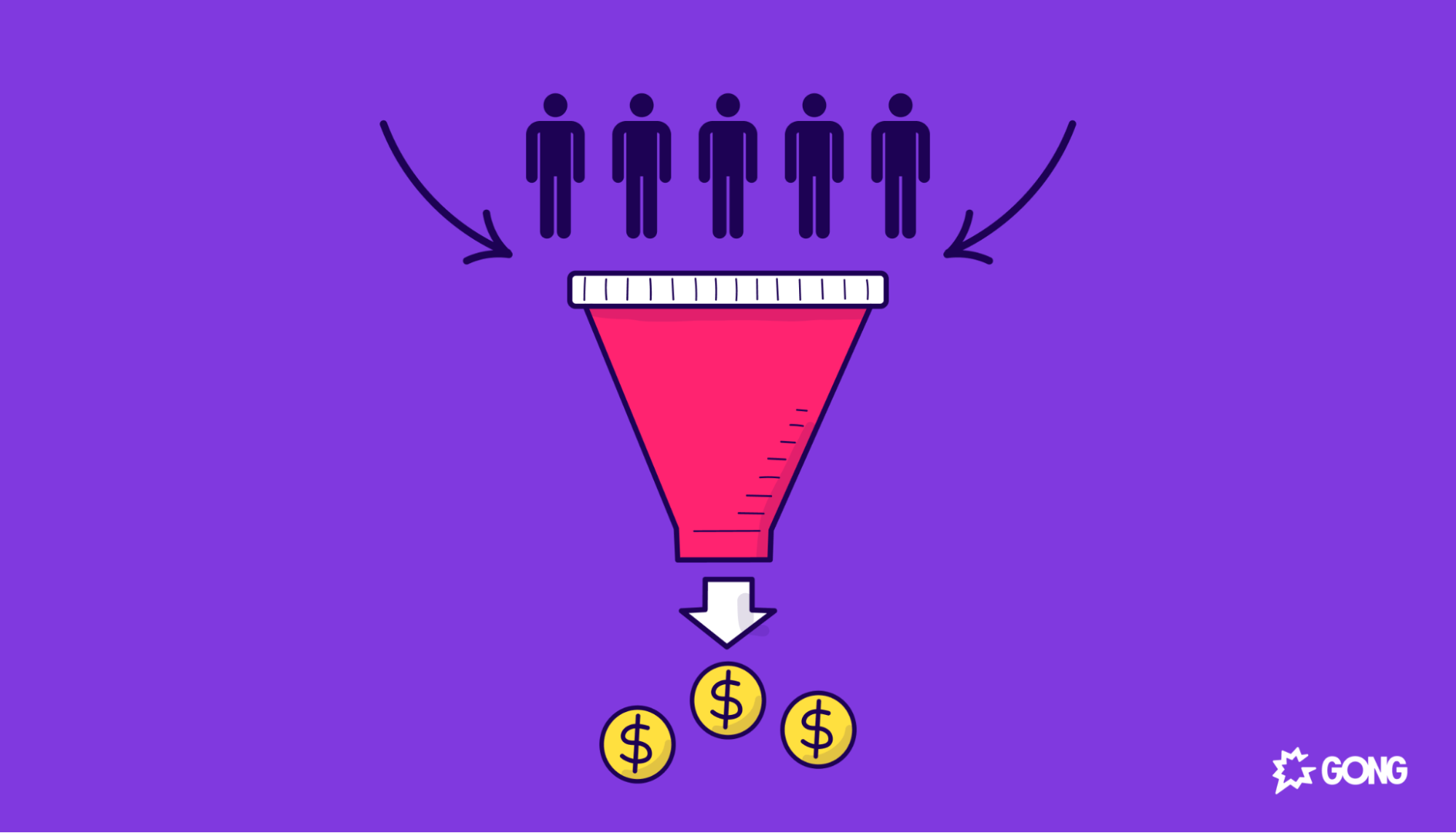
It fills your pipeline with qualified prospects. This is key because you don’t want your reps to waste time chasing lukewarm prospects who have no interest in your offer.
Wins your prospects’ trust
89% of buyers describe the salespeople they do business with as “trusted advisors.”
To succeed with prospecting, you need to build trust with your buyers. How? By providing value throughout the entire sales process. Examples include sharing helpful content and focusing on educating rather than selling.
Uncovers competitive insights
Asking questions like, “Do you already have a solution in place?” or “Why are you switching?” can help you learn more about what prospects like or dislike about a competing solution. With these insights, you can personalize your pitch and explain how your solution fills in the gap.
Leads vs prospects: What’s the difference?
A lead is someone who has expressed interest in your products or services. They may have discovered your blog via an online search and downloaded an ebook. However, they haven’t been qualified yet.
In contrast, a prospect is a qualified lead that is worth pursuing because it’s been deemed a good fit for your solution.
It’s worth noting that someone can be qualified as a prospect even if they’ve had no interaction with your company. For example, a potential buyer who fits your ideal customer profile could be deemed a qualified prospect.
Steps of the sales prospecting process
Buyers are bombarded with new offers on a daily basis, and this only makes it harder for your sales team to stand out.
Follow these six steps to create an effective sales prospecting process.
1. Define your ideal customer profile (ICP)
To succeed in B2B sales, you need to know who you’re targeting.
Start by creating an ideal customer profile (ICP) — a detailed description of the type of company that would get the most value from your products or services.
An ICP includes information like:
- Industry
- Revenue
- Employee count
- Geography
- Key challenges
- Tech stack
Here’s an example of an ICP:
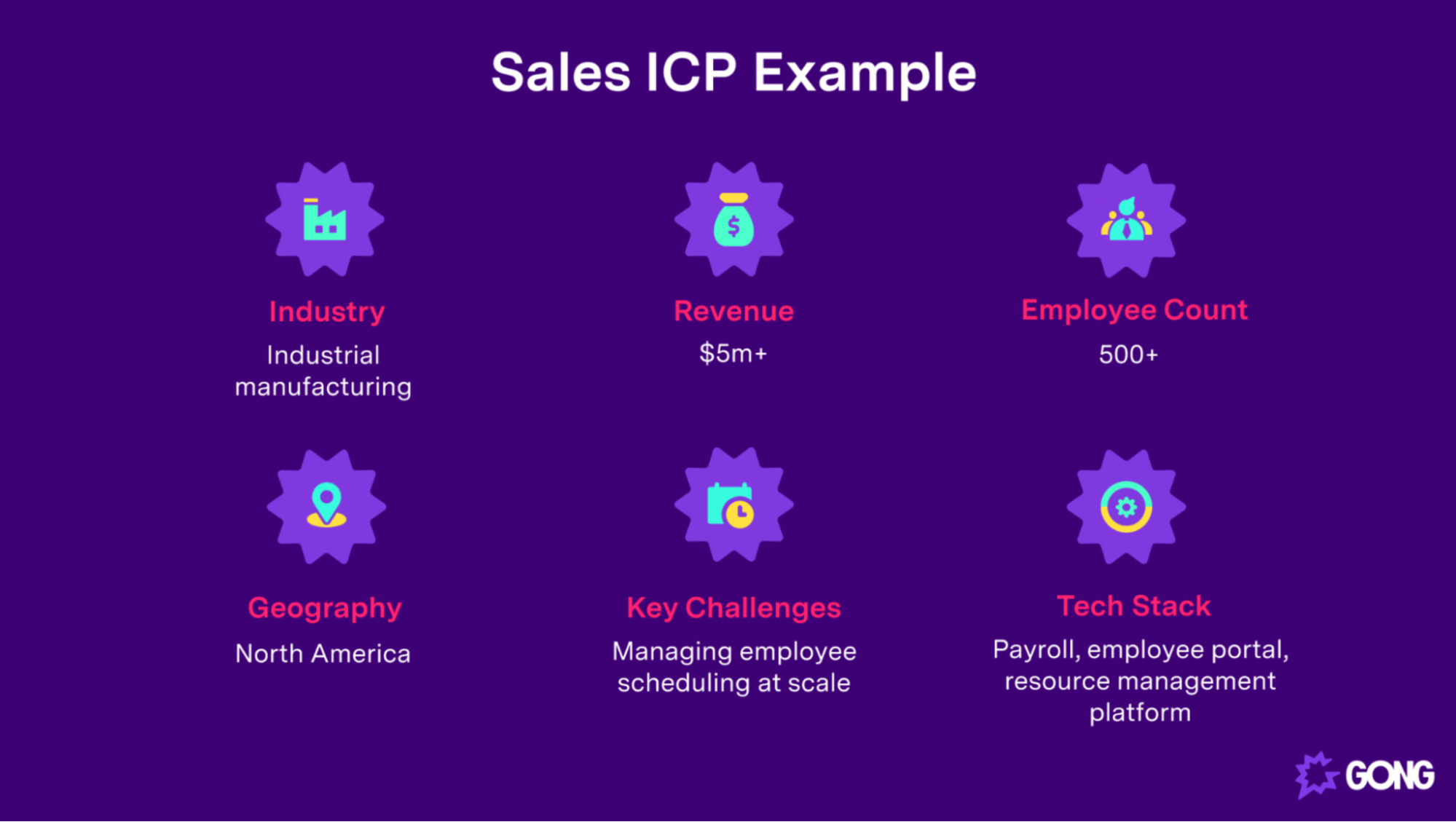
So how do you fill out your ICP?
A good place to start is to look at your current customer base. What attributes do they have in common? Gather data from your CRM, sales enablement platform, or whatever tool you use.
Look for anything that stands out. For example, maybe your best accounts operate in the software industry and generate $5 million in annual revenue. Be sure to get input from your top sales reps here.
Once you’ve created an ICP, you’ll have a clear picture of who you’re targeting. This will help you score and prioritize your prospects.
2. Research your prospects
Reaching out to a prospect without doing any preparation is a huge mistake. It just shows that you’re only interested in the sale — not learning your prospect’s pain points and helping them.
So make sure to do your homework.
Fortunately, platforms like LinkedIn make it easy to research your prospects and learn more about their companies. With Sales Navigator, you can access insights like:
- Employee count
- Employee distribution by function
- New hires
- Total job openings
Here’s an example:
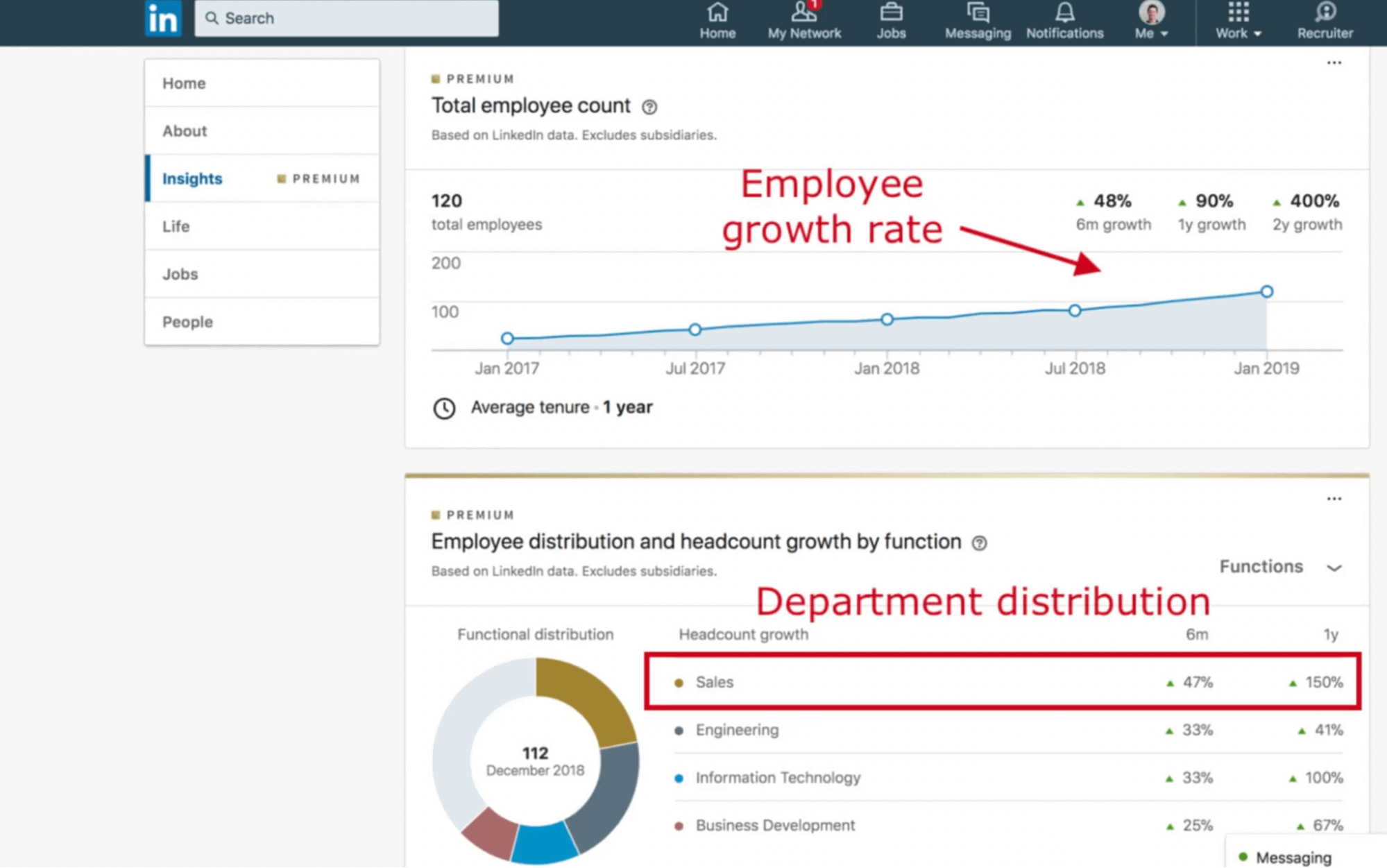
Features like department distribution can help you understand how a company is growing. If you offer IT services or software, companies with a well-resourced IT department might be good prospects to reach out to.
It’s also helpful to know what a company has in its technology stack. Tools like Crunchbase let you peek into the software products a company uses.
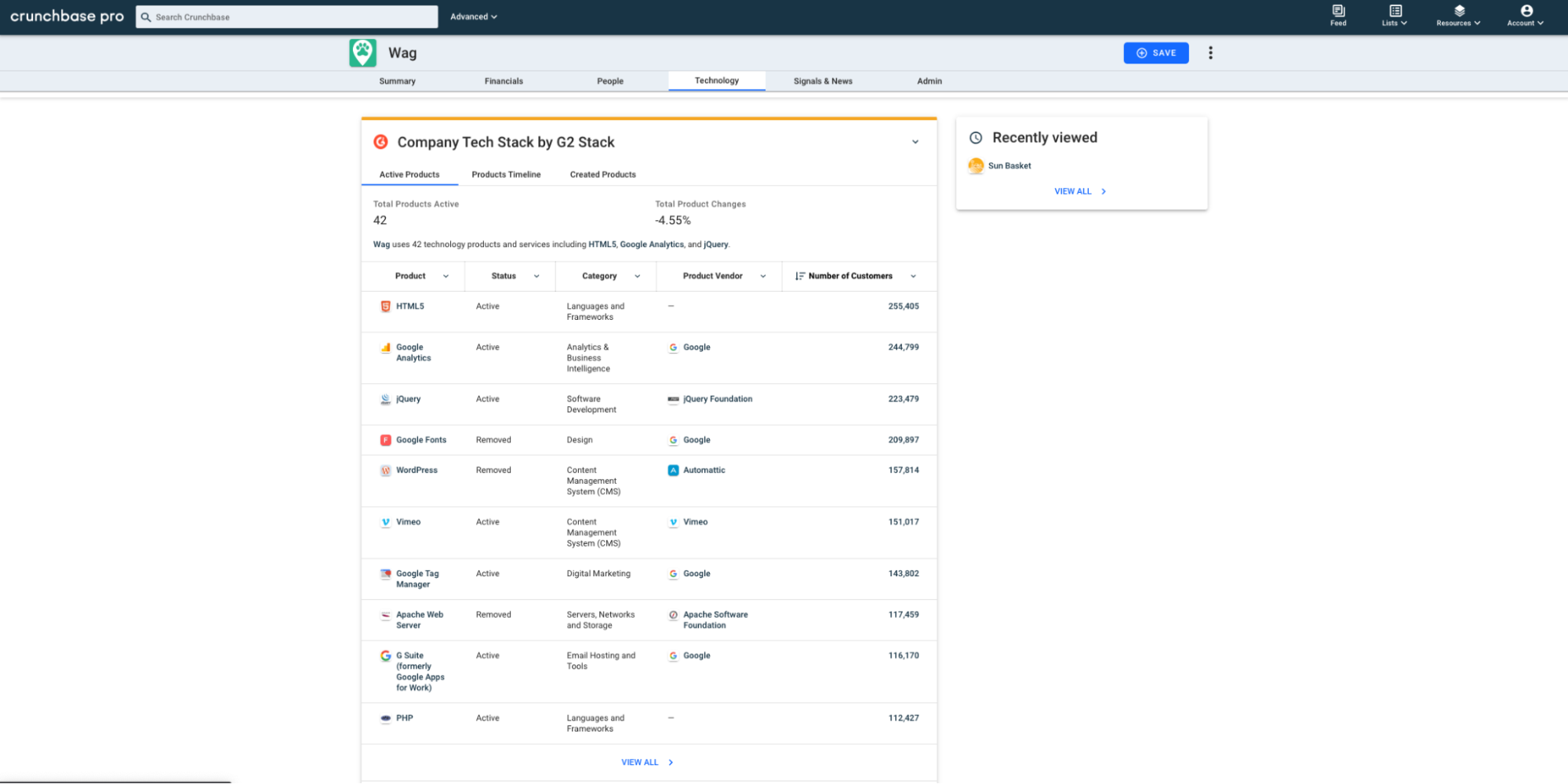
This kind of research can help you create an effective sales pitch. For example, you can highlight the shortcomings of the tools the prospect uses and highlight how your solution addresses them.
3. Qualify and prioritize your prospects
Some prospects are more likely to close than others. If you want to boost your close rates, you need to know where to focus your efforts — and that starts with qualifying.
Look at the research that you conducted in the previous step. Does the prospect match your ICP? If so, then they may be a good fit for your products or services.
Another way to qualify prospects is to use a qualification framework like BANT, which stands for the following:
- Budget: Does the prospect have the budget for your solution?
- Authority: Are you speaking to a decision-maker?
- Need: Does the prospect have a true need for your solution?
- Timeline: How soon is the prospect looking to get started?
A prospect is considered qualified if they meet at least three of these criteria.
Once you qualify a prospect, the next step is to prioritize them. This will keep your reps from speaking to unqualified prospects while your hottest leads slowly grow cold.
Set up a lead scoring system to prioritize your prospects. Use data from previously closed deals to decide which attributes to assign more value to.
For example, if many of your current buyers are from the technology industry, you could consider assigning a higher value to this attribute.
Here’s an example of a lead scoring model:
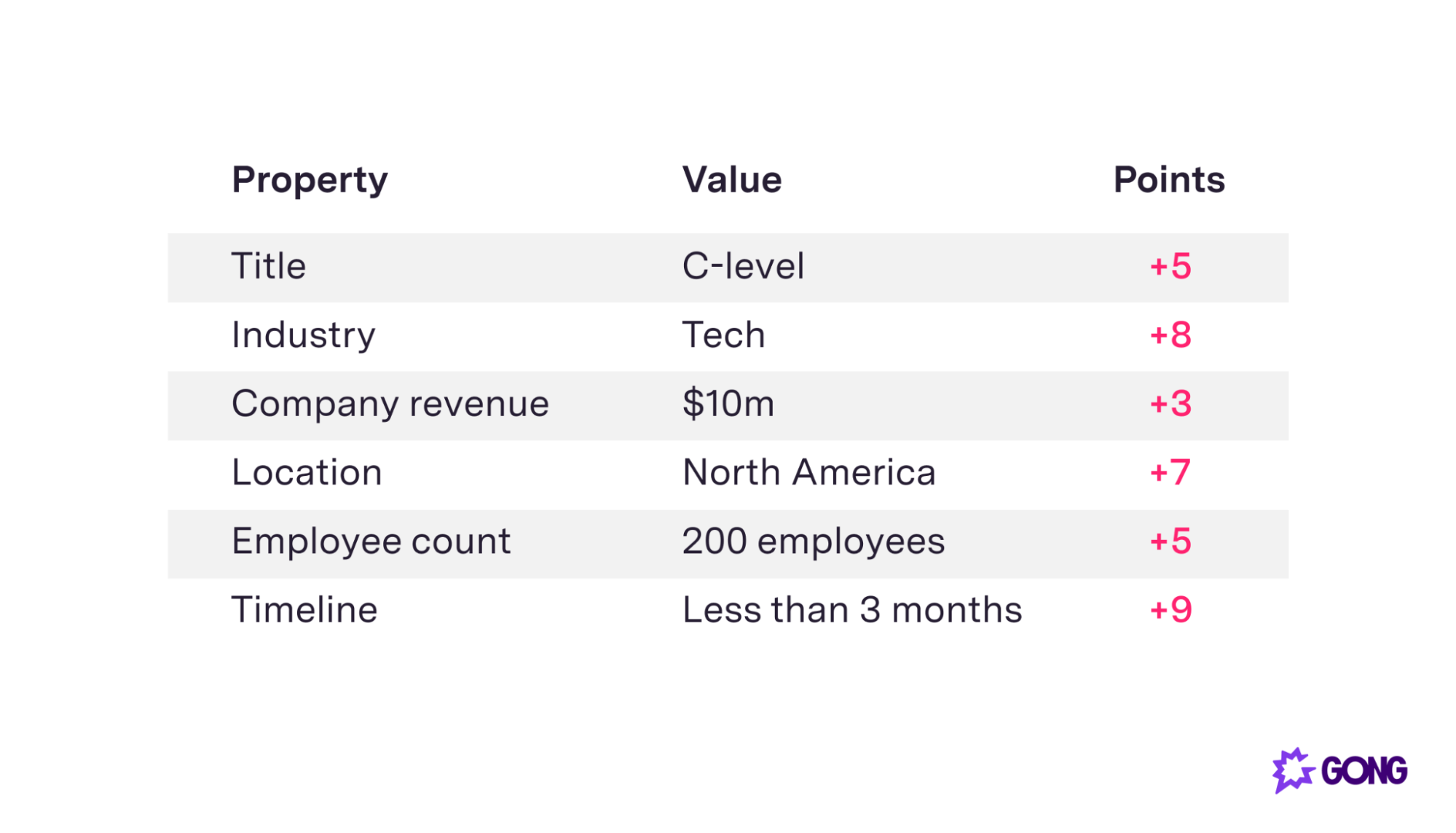
Then, add up the scores for each prospect. Those with high scores are the ones that your reps should focus on first.
4. Identify outreach channels
The next step is to identify the channels you’ll use to conduct your outreach. It’s important to meet your buyers where they are.
To quickly recap, common outreach channels include:
- Phone calls
- Social media
- SMS
The channel you use will depend on your prospect. Some prefer to communicate over the phone, while others prefer to use email.
However, don’t just rely on one outreach channel.
Even if you craft a compelling offer, there’s no guarantee that a prospect will see it. Take a multi-channel approach to increase your chances of connecting with prospects. This will also help you capture more of your market.
72% of B2B companies that sell via seven or more channels are more likely to increase their market share.
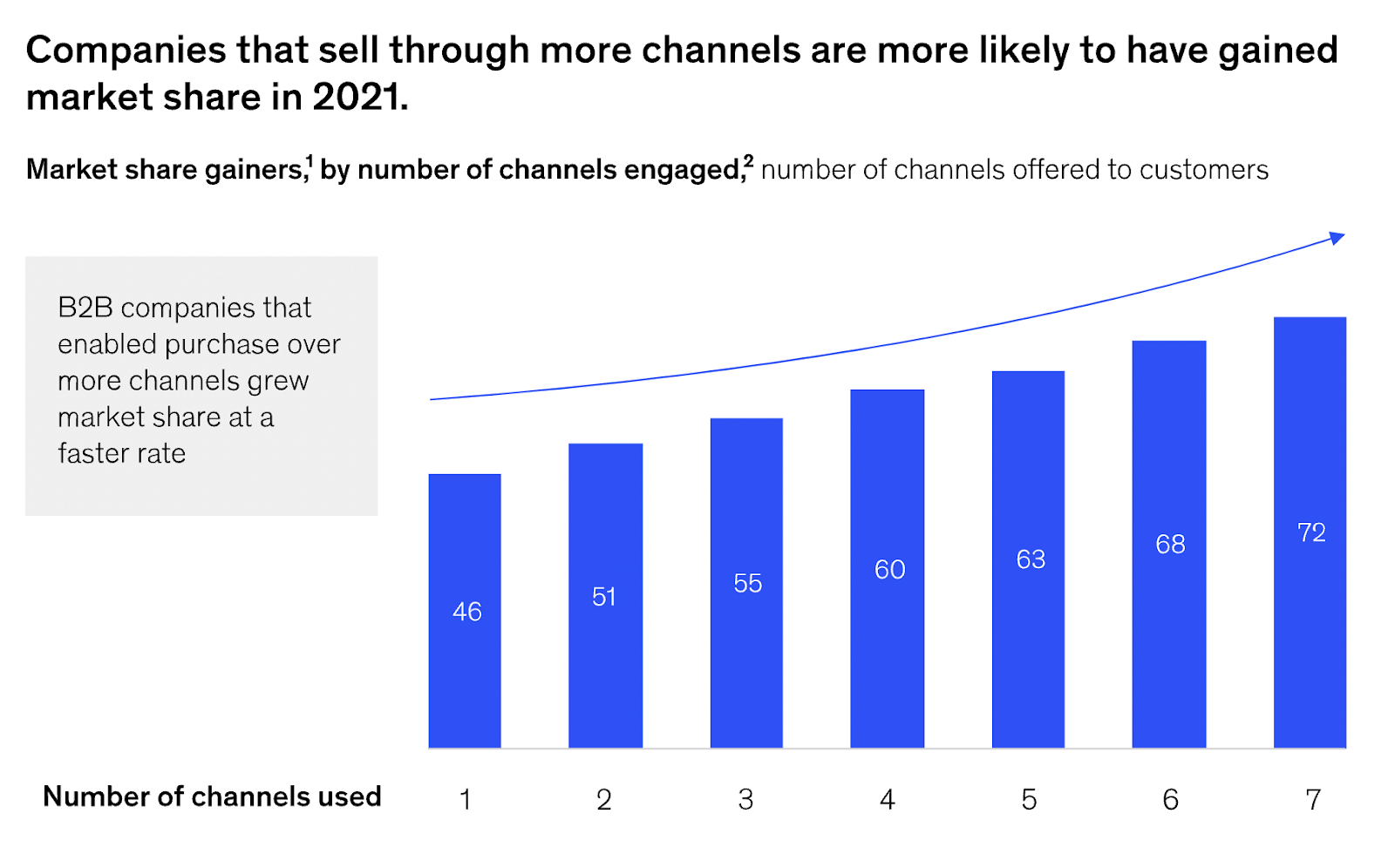
Be sure to mix up your outreach and include multiple channels. This will allow you to meet prospective buyers in the channels they prefer.
5. Craft a personalized pitch
Ultimately, you’re not pitching to companies; you’re pitching to people with unique backgrounds and different needs. They don’t want to be treated as just another name on your list.
Whether you’re reaching out to prospects through email or phone, you have to personalize your pitch and make it relevant to each of them.
Why is this important?
Because too often, reps jump into their pitch without considering their prospect’s needs. Most don’t even realize it — 65% of sellers say that they always put buyers first, but just 23% of buyers agree.
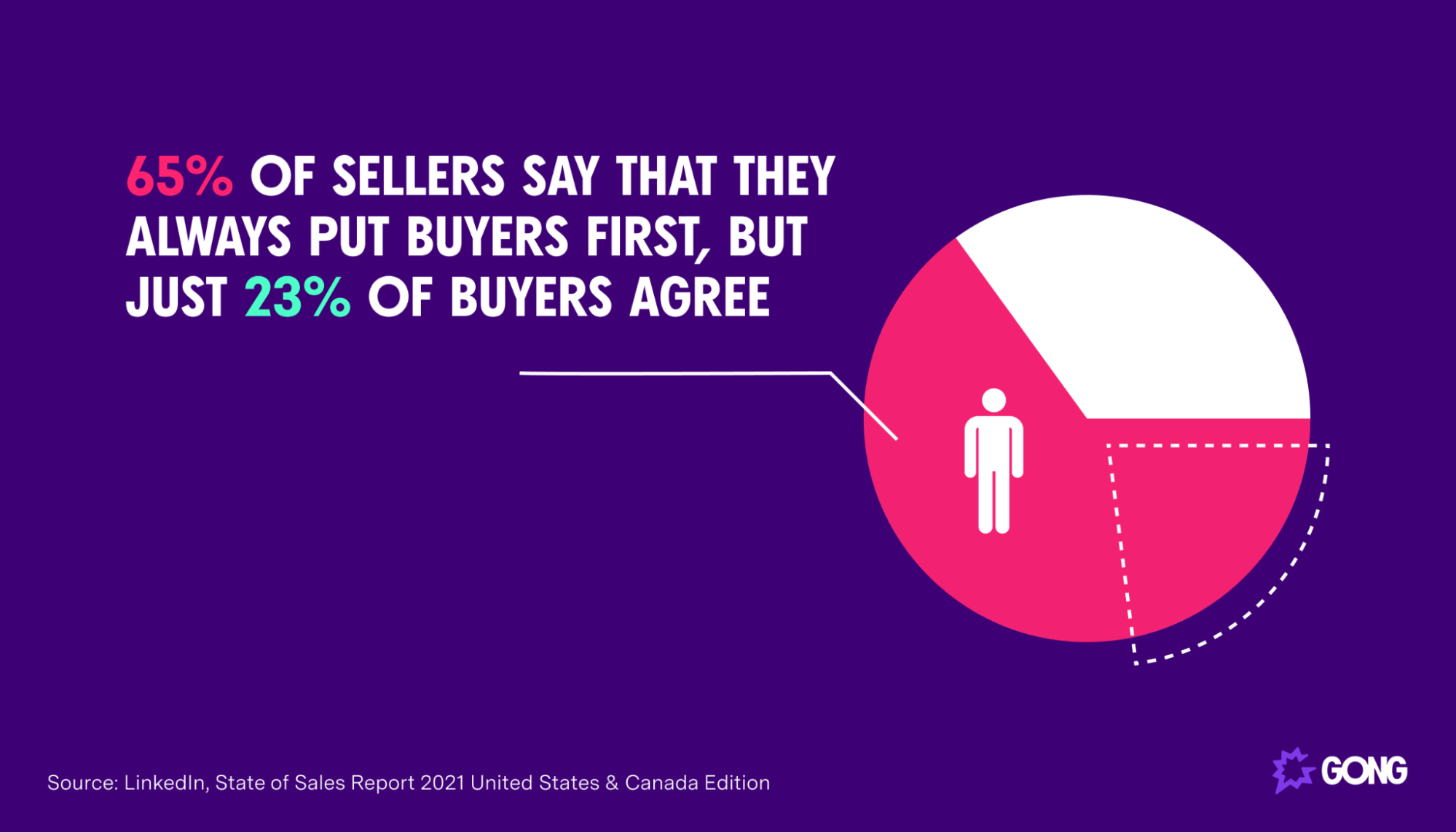
Here are a few tips to help with your prospecting efforts:
- Make it personal: Don’t just send a generic message and expect it to work. Look at your research, and reference a problem that the prospect is experiencing. You can also reference a common contact or even a shared interest. Browse your prospects’ profiles to learn what’s top of mind for them.
- Provide value: Jump right into your pitch, and you’ll immediately put prospects on the defensive. Instead, focus on providing value. Approach every conversation with the question, “How can I help this person?” When you provide value throughout the buying process, you’ll position yourself as a trusted advisor.
- Keep it casual: Keep your conversations as casual as possible. You don’t want to be too “salesy” or aggressive in your approach. You’re simply trying to build rapport and determine whether the prospect can benefit from your solution.
6. Perfect your cold call and email outreach
Cold calling and cold email outreach may seem old school. But both of these channels can absolutely work with the right sales prospecting techniques.
Let’s look at cold calls first.
Cold calls
Once a buyer answers, you’ll typically only have a few seconds before they decide whether to stay on the line or end the call.
Here are our best cold calling tips for getting high response rates:
- State your full name and the company name to command respect
- Ask, “How’ve you been?” as your opening line
- State the reason for your call to put your prospect’s mind at ease
Here’s an example of what a cold call script can look like:
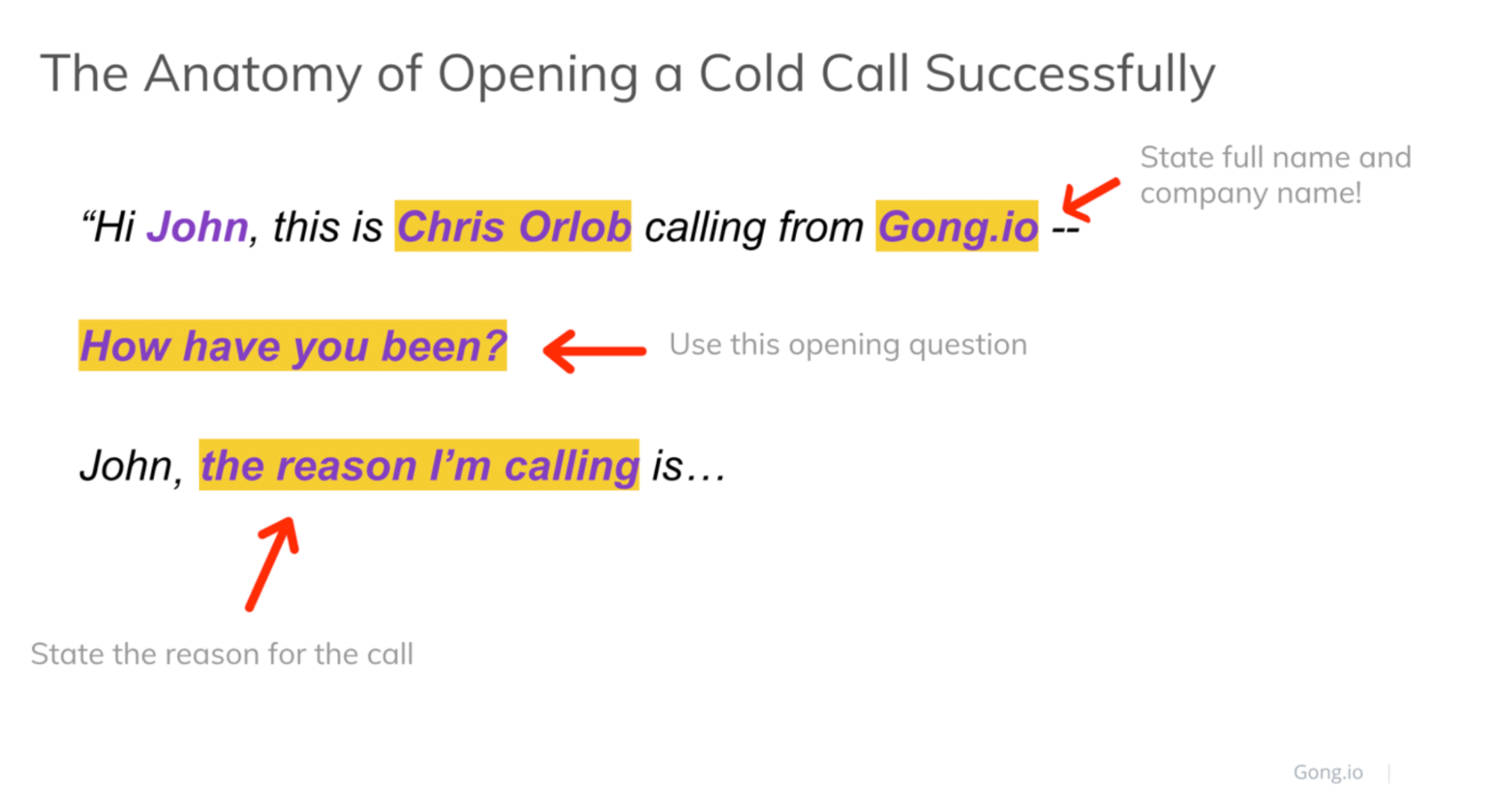
Don’t let the simplicity of this cold calling script fool you.
Just asking, “How’ve you been?” has a 6.6x higher success rate than the baseline.
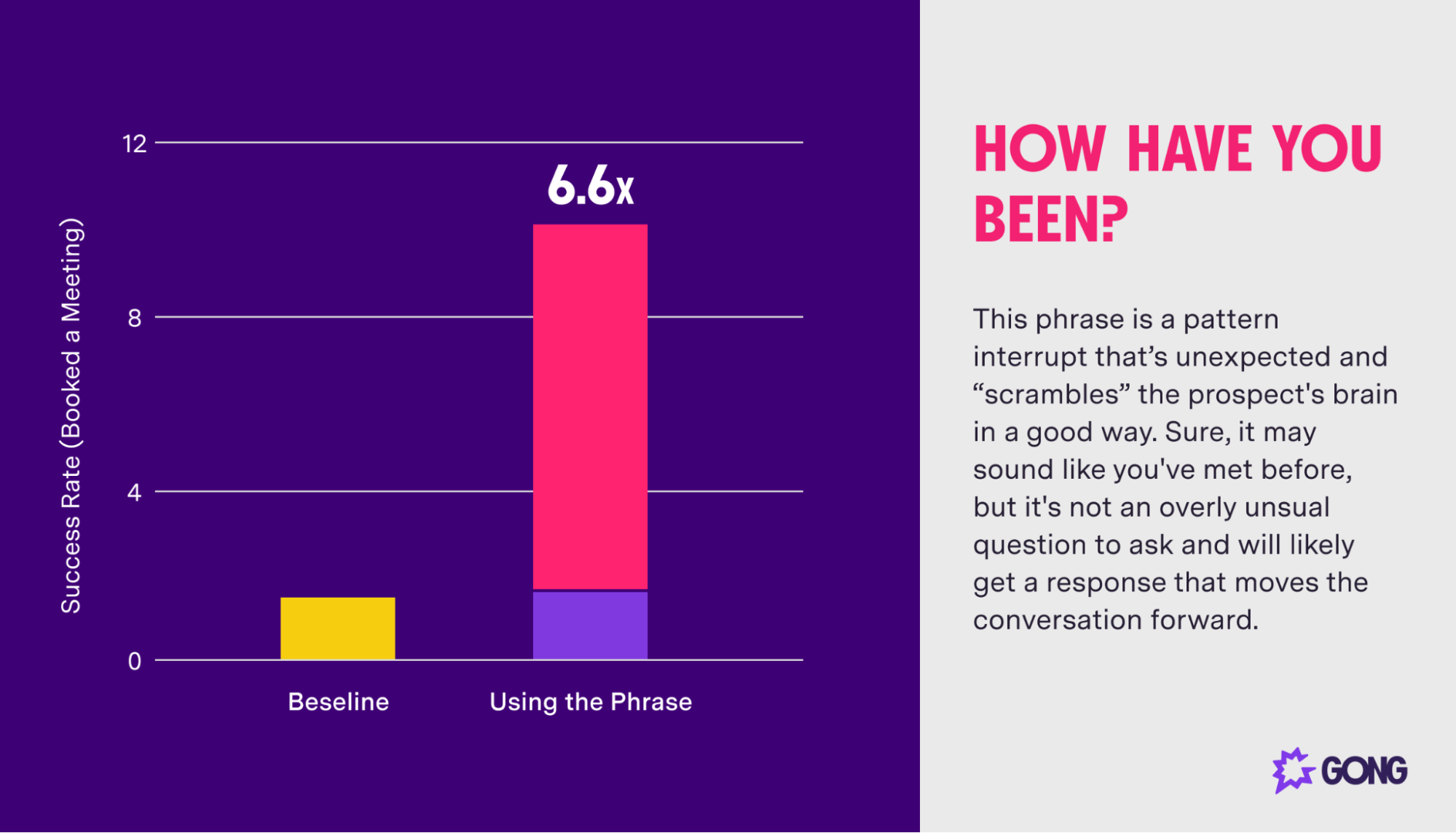
This question works well because it’s an example of “pattern interrupt” — it deviates from what prospects typically expect from salespeople, which makes them more receptive to you.
Cold emails
Writing an effective sales email isn’t easy — it needs a strong subject line and personalized copy to get the prospect to read through the email.
While every part of a sales email is important, there’s one part that you simply cannot afford to overlook if you want to turn cold prospects into potential buyers.
That’s your email call to action (CTA).
Based on our analysis of over 300,000 emails, the best-performing CTA asked about the prospect’s interest level.
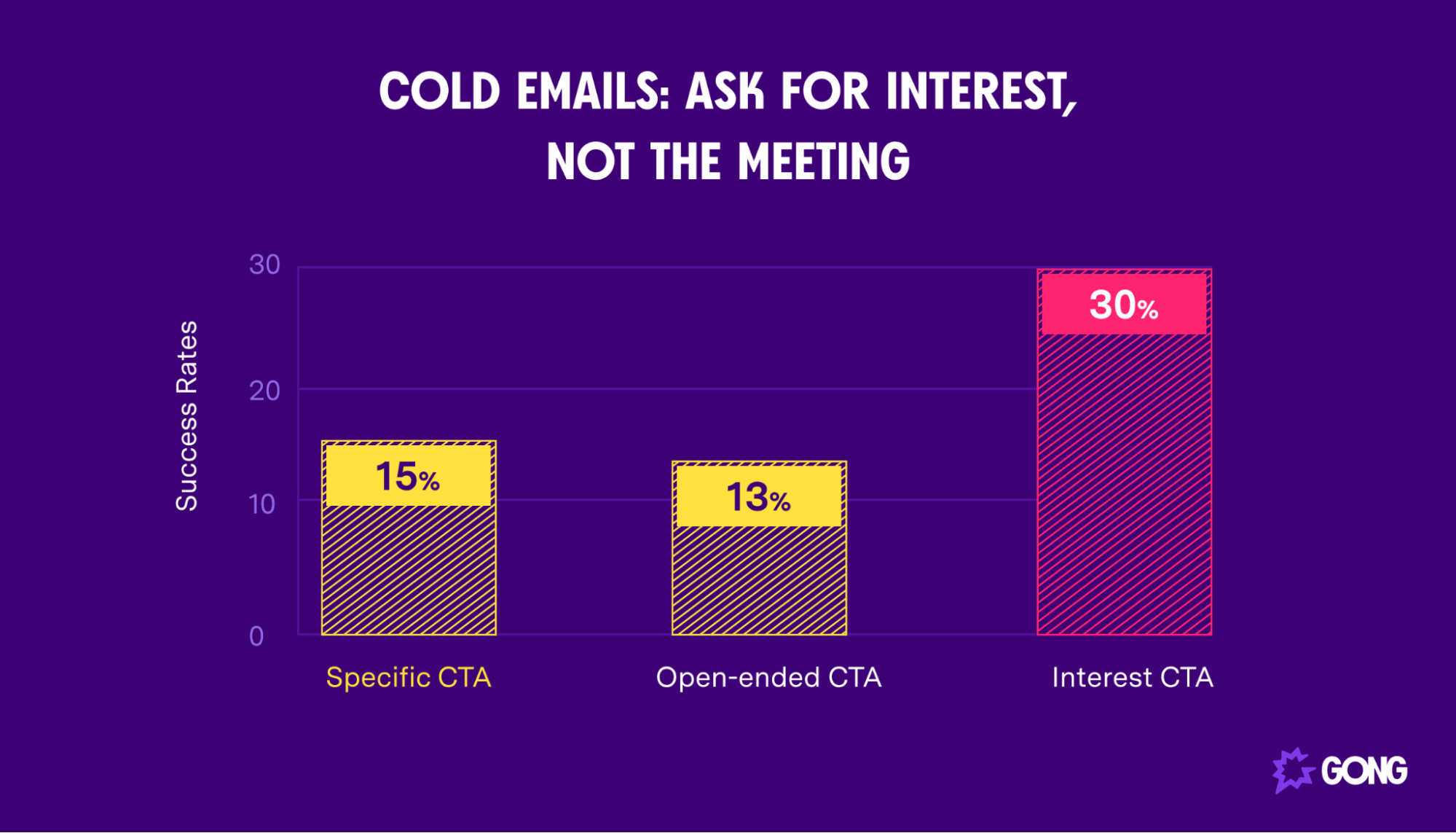
An example is something like, “Interested in learning more about [solution]?” Once you get a prospect interested, you can move them toward a meeting and into your sales funnel.
Struggling to create effective sales emails? Download our sales email templates to create emails for the entire sales process, from prospecting to closing.
Take your sales prospecting to the next level with Gong
Prospecting is one of the most important steps in the sales process. It keeps your pipeline full and positions you as a trusted advisor — both of which are key to meeting your sales goals.
Of course, securing the meeting is only the start.
How do you keep a deal moving through your pipeline? How do you know what messaging works and what doesn’t? How do you know your reps are adopting your enablement program?
This is where Gong comes in.
Gong is a revenue intelligence platform that captures sales conversations across phone, email, and web conferencing. It uses AI technology to deliver data-backed insights and personalized recommendations that will help your reps maintain their deal momentum.
Request a demo today to see how Gong can give clarity to your pipeline and help your sales professionals win more deals.